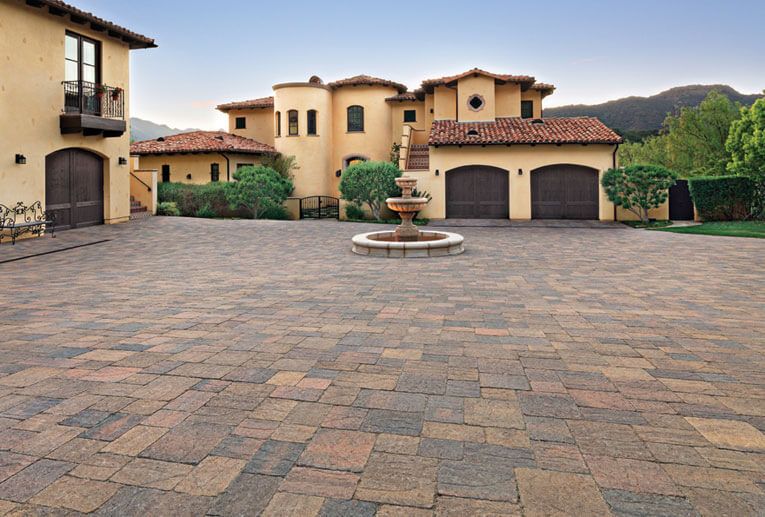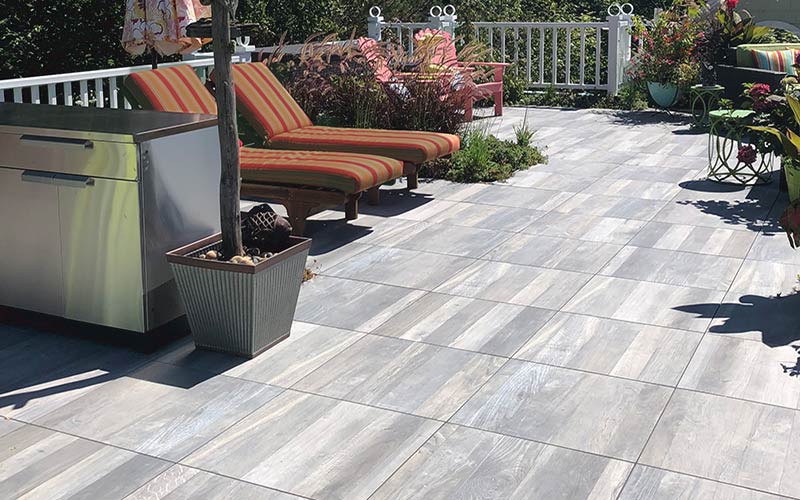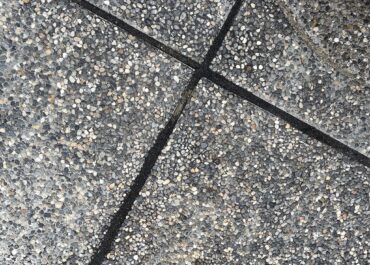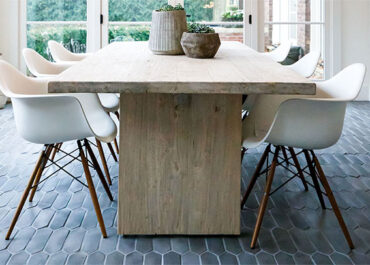
For many years now, pavers have been a staple in the hardscape business. And with modern technology, they have only become better and better. So what will happen if we put the traditional vs the modern in a paver battle? Who is left victorious from the porcelain vs stone pavers fight?
Porcelain vs Stone Pavers
The stone pavers are representing the classic approach, used by many cultures for centuries across the globe, due to their resistance and versatility. From ancient China to the Roman Empire, natural stones have been the material of choice for the creation of paving stones.
Nowadays, and with advancements in the technology of manufacturing and treatment of materials, there are many viable options to natural stone. The most popular of these alternatives are concrete pavers, with tremendous cost benefit and overall longevity.
However, in recent years, yet another material has been dominating the market: the porcelain pavers. Currently, they are considered the top material from a technological perspective and are delivering in every single project they are being incorporated to, acquiring a legion of fans along the way.
So let’s first talk about each one o these materials separately, their advantages and disadvantages, and then compare the two in a porcelain vs stone pavers match. Let’s get right to it.
Stone Pavers

Let’s start with the oldest competitor, the natural stone.
There’s a reason why they were used for so many cultures in the past and continue to be relevant to this day. The natural sturdiness and aesthetic appeal of natural stone continues to maintain at the top spot of materials for pavers.
There are many alternatives you can from, the most famous being travertine, cobblestones, flagstone, limestone and marble. Each has its own unique advantages and disadvantages and are recommended for specific applications.
The sheer options that natural stone provides when it comes to materials, design and colors are uncanny and unmatched by other materials.
Advantages of Natural Stone
As we just mentioned, the array of available options is a big attractive of working with natural stone. If you decide to go for it, it is certain that you can find something that will fit your project.
The aesthetic appeal of natural stone is for sure its big advantage. No other material can beat the elegance of it. For that reason, most of them try to “simulate” natural stone as best as possible.
As for the resistance, it will depend on exactly what kind of stone you’re working with, but most of them are very resistant to shock.
Disadvantages of Natural Stone
As resistant to shock as they are, stone is a porous material, so it needs to be sealed to be properly protected against stains and weather effects. This sealing, when not chosen carefully, can affect the looks of the stone, which can potentially harm the aesthetic appeal of it.
The cost of stone can also be considered one of its advantages. You have many cheaper options in the market, some that even have a better cost relation, so the price can be a little difficult to fit and justify on a low budget.
Of course, since there are many options of stone, you can find something that fits your budget if you decide to go for it and look hard enough. The cost of natural stone pavers usually range from $10 to $30 per square foot.
Porcelain Pavers

With their popularity growing in recent years and its resistance tested time and time again, porcelain pavers have come to prove that modern technology can still find ways to improve the hardscape industry.
If the porcelain that comes to your mind is that fragile tableware material, used for the confection of plates and teapots, you couldn’t be more wrong. Porcelain pavers are amongst the most resistant materials you can find.
During their fabrication process, they go through a process that makes them non-porous, that being their most important characteristics alongside their resistance.
Advantages of Porcelain
The non-porosity of pavers is for sure its bigger advantage. This makes porcelain pavers naturally resistant to stains, freeze-thaw cycles and other weather effects.
Also, thanks to that non-porosity, sealing is not needed when working with porcelain. It is a naturally impervious materials, so it does not require it. That, in the long run, saves you tons of money and time in maintenance.
The resistance of porcelain is also a big selling point. So much, in fact, that porcelain pavers are frequently the pavers of choice for industrial flooring and high traffic areas.
Disadvantages of Porcelain
Honestly, porcelain pavers do not present many advantages.
The upfront cost is usually about the same as stone, between $10 to $30 per square foot, depending on the chosen design. That can also be considered a downside compared to cheaper materials.
However, unlike stone (or any other material, for that matter) that proves to be worth in the long run, as porcelain requires little to no maintenance investments.
Also, the difficulty in installation can become a problem, especially outdoors, as porcelain pavers are very heavy.
Porcelain vs Stone Pavers: Comparison
Now that we know a bit more about each, we can make a fair comparison.
From an esthetical point of view, stones will always be the superior material. However, modern porcelain manufacturing techniques make it possible to perfectly mimic virtually any material available in the market.
So, even though stone gets an inch ahead, the two are essential tied in this aspect.
Talking about costs, porcelain gets far ahead. Both have similar upfront costs, but porcelain only increase in value in the long run, as it doesn’t require many further maintenance investments, whereas stone maintenance can be tricky and expensive.
In the installation aspect is complicated.
Porcelain can be installed in many ways, but it is usually a more difficult and costly installation process. Stone is simple and straightforward, even though it doesn’t present as many possible options as porcelain.
And finally, the functionality.
Stone and porcelain can be equally sturdy to shock, but porcelain is more resistant overall. It also has more functionality, since it can be used virtually anywhere with few impacts on maintenance.
Professional Help
On our quick overall analysis, porcelain pavers get ahead. They only lose from and esthetic point of view, that can be redeemed if you take your time to find the right kind of porcelain.
In the end, the best thing you can do to know which one fits better for your project is to ask for the opinion of a professional in the hardscape business.
They can evaluate the particularities of your project and help you reach a better decision.
We here at Eagle Pavers have helped countless homeowners with their paver installation during our 12 years of activity. We know the importance of working closely and adapting the situation to our customers needs, so we highly recommend you search for a professional in your area.
And if you happen to be around our area of activity, the Sarasota and Manatee counties, in FL, why not give us a call to help you?
You can contact us right now at +1 941-210-4192 or email us at sales@eaglepavers.us. We would be happy to hear from you and help you with your project.




